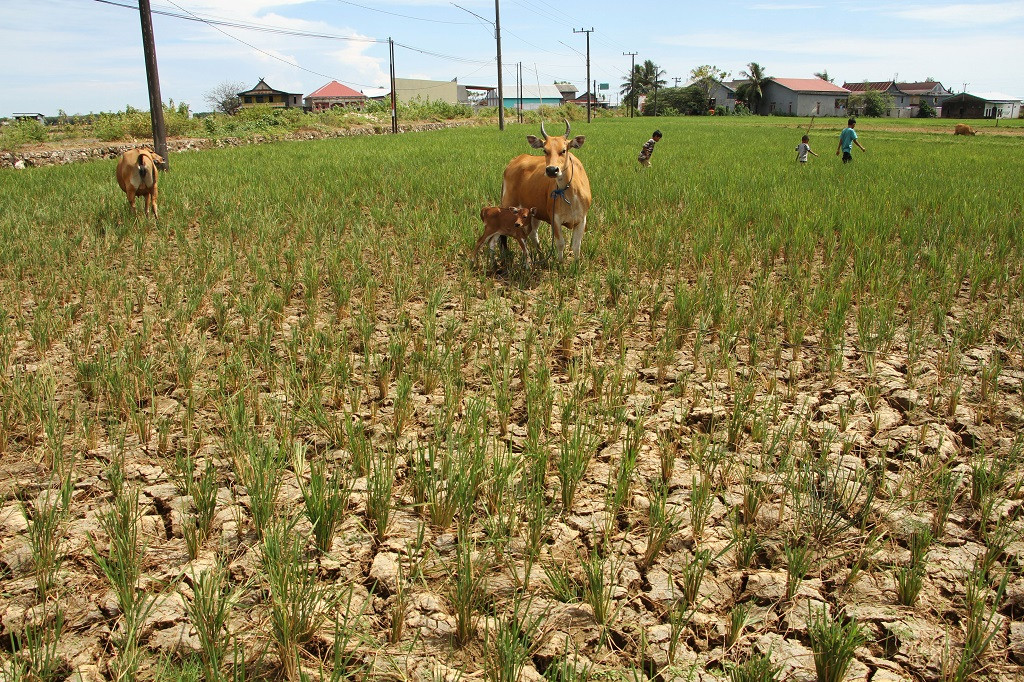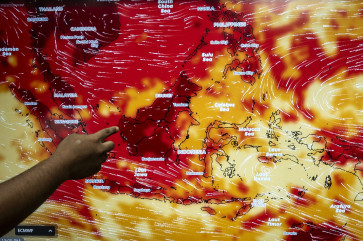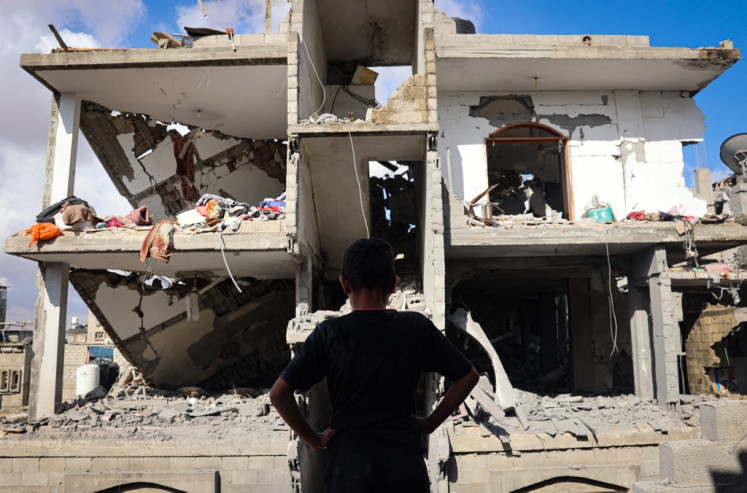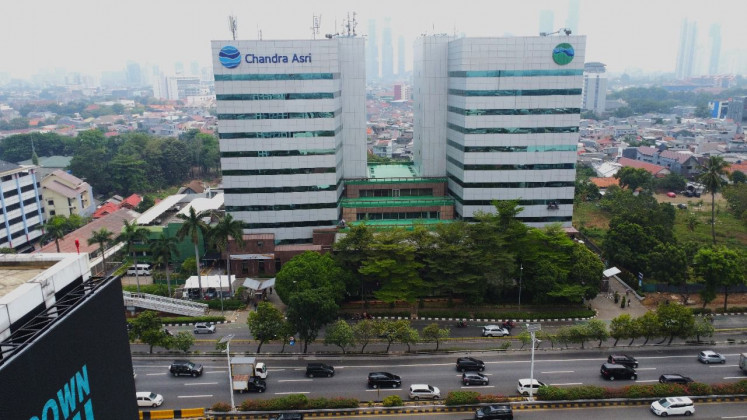Experts warn of contagions, health fears as El Niño returns
Health Ministry orders dengue control measures.
Change Size

E
xperts warned of the increasing risk of contagious disease outbreaks and other health problems in Indonesia as the El Niño climate phenomenon emerges in the tropical Pacific for the first time in seven years.
El Niño, marked by an increase in surface water temperatures in the eastern and central Pacific Ocean, is linked to extreme weather conditions from tropical cyclones and heavy rainfall to severe droughts.
The Meteorology, Climatology and Geophysics Agency (BMKG) forecasts that the phenomenon will peak from this month until September in Indonesia, with most regions expected to face a longer and more severe dry season compared to the previous three years. The BMKG has said that the country should prepare for potential droughts, hot spots and wildfires due to hotter weather and lower precipitation.
Epidemiologist Dicky Budiman said El Niño might lead to an increased risk of vector-borne diseases, including dengue fever and malaria.
"Warmer temperatures facilitate the increase in hatching and reproduction rates of mosquitoes, raising the risk for mosquito-borne diseases," Dicky said on Friday.
Similar cases have been reported in other countries as global temperatures rise because of the combined effect of the naturally occurring El Niño weather phenomenon and human-induced climate change. This combined effect, according to the United Nations, would make the global temperature from 2023 to 2027 the warmest on record.
Last month, the United States reported two locally acquired malaria cases, while Europe has seen more cases of locally acquired dengue in 2022 than the total number of cases in the previous decade.
In Indonesia, a strong El Niño phenomenon in 1997-1998 caused malaria outbreaks in the country's mountainous regions, where the disease was not typically found, the 1999 American Society of Tropical Medicine and Hygiene revealed.
The World Health Organization has since June of this year been preparing for an increased spread of viral diseases like dengue, Zika and chikungunya linked to the El Niño weather phenomenon. It said that incidence of dengue has already risen sharply in recent decades, particularly in the Americas, because of climate change.
Dengue control
The Health Ministry has issued a circular to mitigate the increasing risk of dengue fever during El Niño, spokesperson Siti Nadia Tarmizi said.
The circular ordered regional administrations to educate the public on the increasing risk of dengue outbreaks and deploy Jumantik, or volunteer mosquito monitors tasked with carrying out door-to-door control measures to curb the number of mosquito larvae.
Local health authorities are also urged to boost the decades-old public awareness campaign focusing on the 3M protocols of mengubur (bury), menguras (drain) and menutup (cover) for stagnant water.
Last year, the ministry reported 143,000 cases of dengue fever, or around 52 cases for every 100,000 people, with West Java, Central Java, Bali and East Java being the largest contributors to the nationwide figure. The ministry also recorded 1,236 dengue deaths, mostly among children aged below 14 years.
This year, at least 35,694 dengue cases and 270 deaths were reported nationwide by May.
Previously, ministry officials said that authorities were planning to ramp up dengue surveillance and distribute dengue rapid test kits, making them more widely available at Puskesmas (community health centers) across the country.
The government is also waiting on approval from the Indonesia Technical Advisory Group on Immunization (ITAGI) for the inclusion of two dengue vaccines, Dengvaxia and Qdenga, in the national immunization program.
Other risks
Epidemiologist Dicky said that El Niño-induced drought might lead to an increase in sediment and contaminant levels in water bodies as water evaporates, as well as to risky water behavior, which would eventually cause an increase in in water-borne diseases such as cholera, dysentery, typhoid and diarrhea.
Public health expert Tjandra Yoga Aditama said El Niño would not only cause a rise in vector and water-borne diseases but also various other health problems such as, heat stress and respiratory diseases because of the worsening pollution and malnutrition caused by food shortages.
"El Nino can also trigger weather-related disasters such as forest fires, which not only causes injuries and fatalities but also hinders access to healthcare facilities," Tjandra said, adding that the government should prepare for the impact of El Niño to prevent the loss of lives.
Prolonged drought and extreme cold caused by El Niño has been blamed for a recent famine that has killed six residents in Papua and left at least 7,500 people scrambling for food.
Cold weather and a lack of rain has killed the taro and yam grown in the region, forcing residents to eat the spoiled crops. Some residents who had consumed the spoiled tubers had become sick with diarrhea and died because of dehydration.









